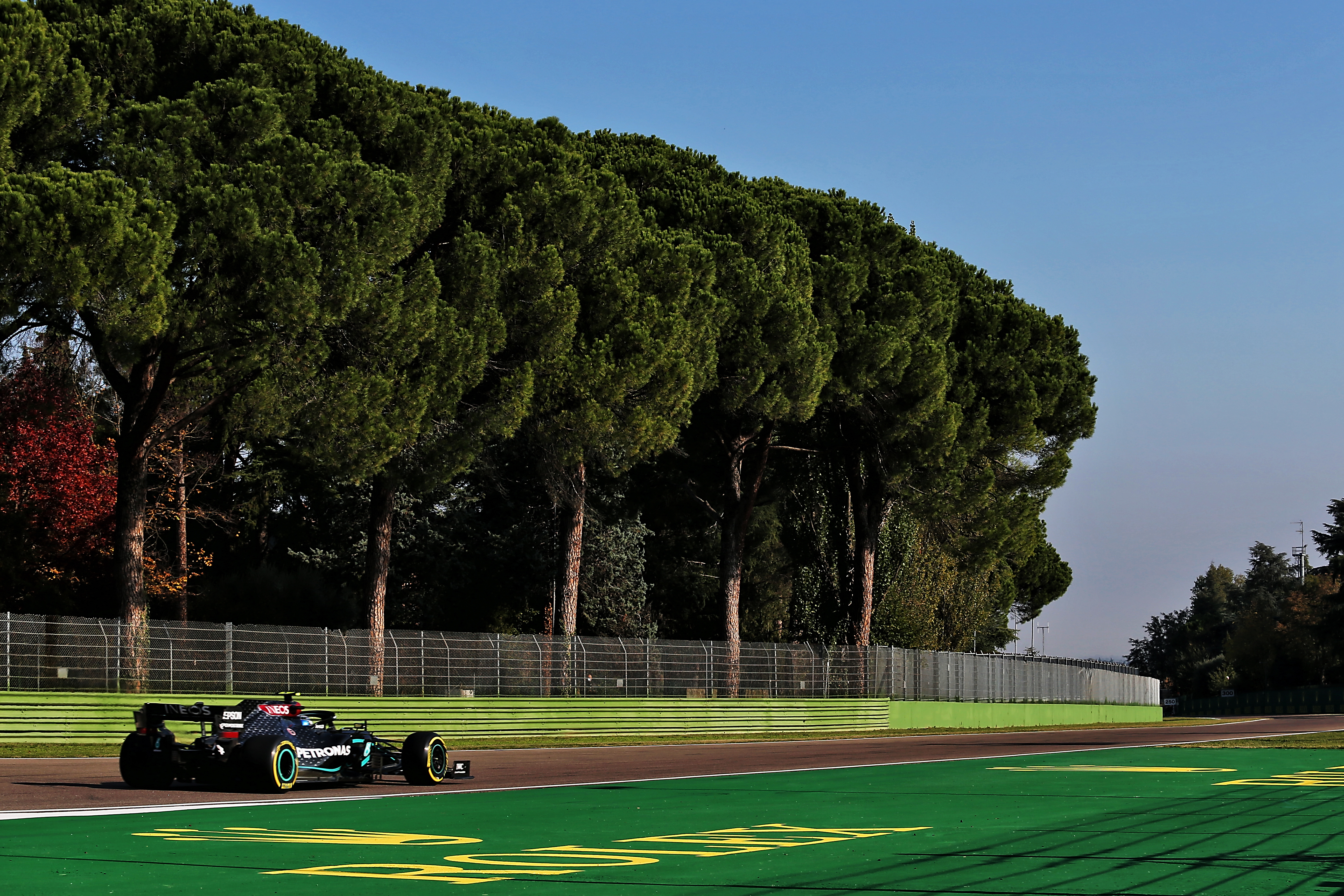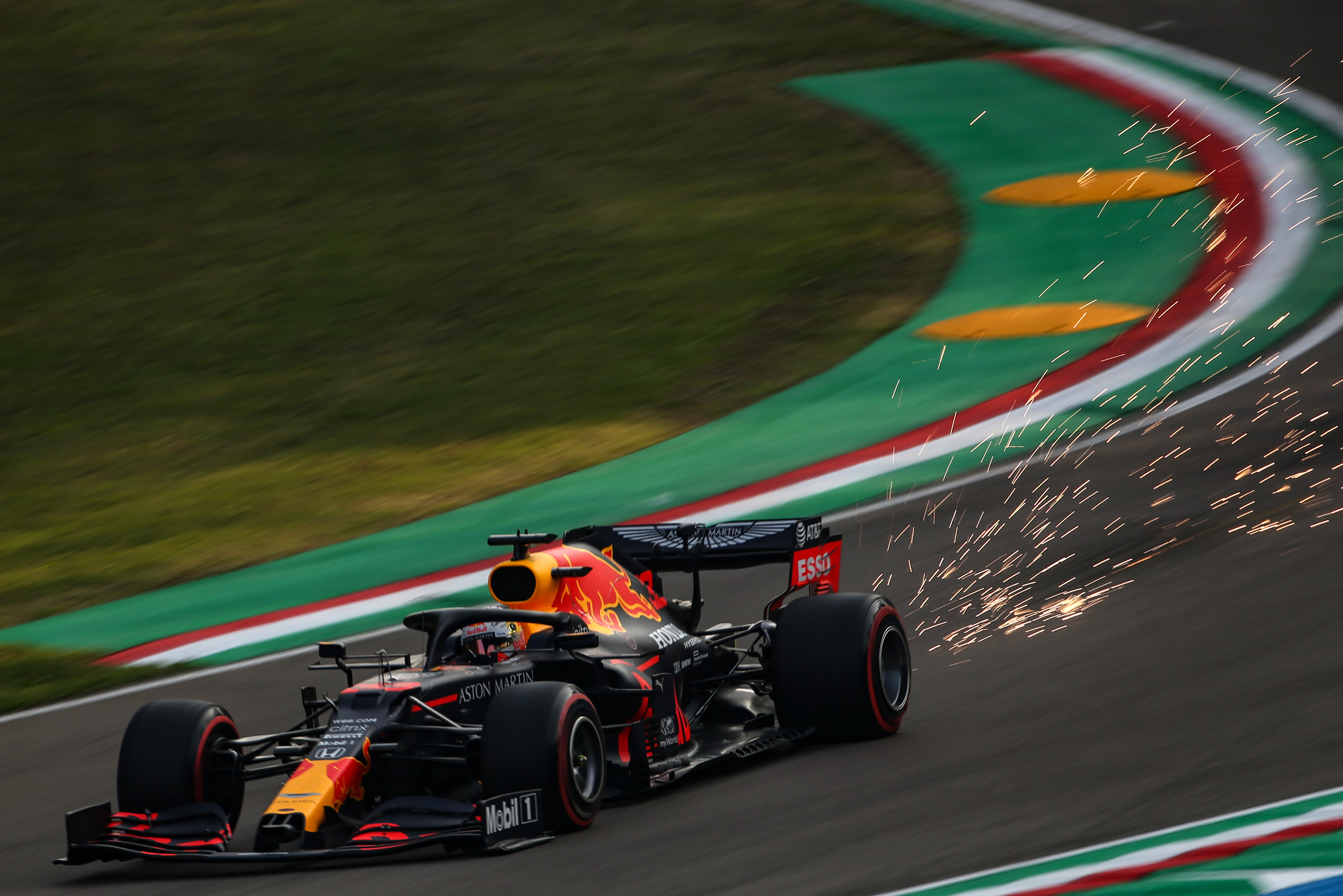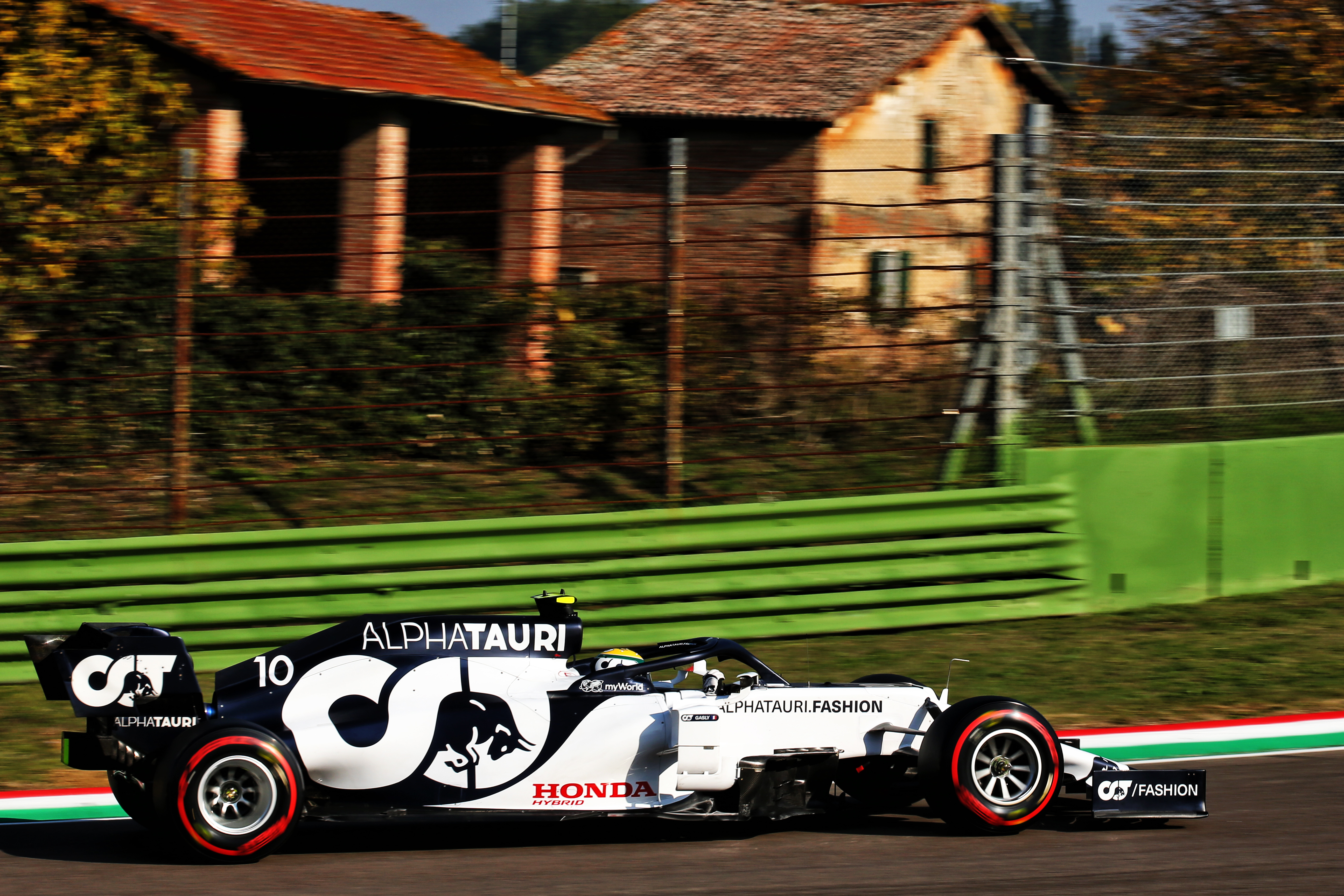Up Next

Looking to the patterns seen in the single practice session and the circumstances of qualifying, it’s surely no surprise that Mercedes looks marginally stronger than Max Verstappen’s Red Bull at the front. But just behind that, there just might be the possibility of a major upset. Read on.
There was a sudden step change in Mercedes’ performance partway through the single practice session. Lewis Hamilton was out on his last low-fuel run on softs before getting his race sim long runs underway and he found around 0.5s from one lap to the next. Was it simply a super-lap or did it indicate the change to a more potent engine mode? Mercedes does vary its modes through the practices before committing, as required by the regulations, for the start of qualifying for the rest of the weekend.
Up until that step change it appeared as if Max Verstappen’s Red Bull might be right among the Mercs. It maybe even had the edge over them in the middle sector, the least power-sensitive part of the lap, from Tosa through Piratella and Acqua Minerale to just before the Variante Alta chicane.
Its deficit in the power sectors, 1 and 3, was small enough that it seemed to be a close match over a lap. But then Hamilton did that second consecutive soft-shod lap a full 0.5s faster. That will probably be seen in hindsight as the specific moment that hopes of a genuine challenge to Mercedes were dashed – yet again.

The Mercedes advantage was then only exaggerated by Verstappen’s disrupted qualifying – when a spark plug failure in Q2 restricted his running. “Yes, we just lost our way a bit there,” he admitted. “OK, we got through and we did our [Q2] lap on the mediums but then it just doesn’t give you a good reference to get into Q3 and we definitely seemed to struggle a bit with that.”
The Red Bull RB16 in general is slightly susceptible to having its balance upset by the softest tyre. It has a marginally unstable rear end and as such it often compares better to the Mercedes on a slightly harder compound, where the turn-in is not so sharp that it overloads the rear.
The aero changes run since Nurburgring have helped ease that trait – Verstappen even had understeer there. It now has a bigger window of set-up, allowing it to retain the responsive turn-in without descending into a car that’s difficult even for Verstappen when on the softer tyre.
But perhaps it still needs a bit more familiarisation than the Mercedes when switching to that tyre – and that was something Verstappen was denied by the curtailed running. With only one flying lap, he wasn’t able to do what the Mercedes guys did in Q2 – set the time on the medium and then use the second run just as a feeler lap for the softs, ready for Q3. So that 0.5s gap between Valtteri Bottas’ pole and Verstappen probably exaggerates the difference.
Sharp direction changes and short duration corners are where the Red Bull is at its best relative to the Mercedes. Given that extra horsepower is generally converted into downforce, Red Bull’s whole development philosophy, driven by years of trailing Mercedes on power, has been to steal time on corner entries through greater agility. It makes for a car that’s somewhat lively to drive – and it needs a Verstappen to be comfortable with the trait of a less-than-planted rear end aiding initial turn-in response.

The rear then stabilises as the initial turn is made and the driver gets on the power – but only if he has the confidence to do so, to ride through that initial feeling of instability. For Verstappen it’s become second nature. Daniel Ricciardo had also adapted to it when he was there – and was somewhat taken aback by how the 2019 Renault seemed to take an age to fully respond to a corner. But post-Ricciardo at Red Bull, Pierre Gasly and Alex Albon have not found the trait so easy to live with.
The Red Bull is a little more pitch-sensitive and therefore tends to work its rear tyres a little harder than the more stable Mercedes. It can typically turn on its tyres more quickly in cool temperatures but just as typically, its deficit to the Merc tends to increase towards the end of the stints.
But we didn’t get a definitive reading on how they compared on the long runs (such as they were). Between Hamilton and Bottas, Mercedes got a series of laps on the softs and mediums. Verstappen did softs and hards.
Mercedes tends to be very confident it will always be quick on the hardest tyre. It has the downforce to switch them on. The superb power unit allows it to load up with wing to help out with this. Hence probably why it devoted the limited running available (1.5 hours of practice compared to the normal four hours of a three-day meeting) to just the soft and medium.
But Verstappen’s average on the hard during the ‘long runs’ (not really all that long because of the compressed programme) looked promising (see below).
Long run times, top three
| Softs | Mediums | Hards | |
| Lewis Hamilton | 1m 19.5s (6 laps) | 1m 18.8s (6 laps) | |
| Valtteri Bottas | 1m 19.7s (11 laps) | 1m 19.2s (12 laps) | |
| Max Verstappen | 1m 19.7s (6 laps) | 1m 18.9s (11 laps) |
The fact that Bottas could run the same average pace as Verstappen on the softs despite a stint almost twice as long tends to confirm the Mercedes advantage. What we don’t have is a comparison on the hard.

The real intrigue is in the picture behind the top two teams – thanks to the superb long run pace shown by the AlphaTauris. Given that one of them (Gasly) is starting from the second row, might the junior Red Bull team have another shock in store for us? Gasly completed the best long run of all (see below).
Long run times, others
| Softs | Mediums | Hards | |
| Pierre Gasly | 1m 18.5s (16 laps) | ||
| Daniil Kvyat | 1m 18.9s (16 laps) | ||
| Esteban Ocon | 1m 19.7s (10 laps) | 1m 19.5s (11 laps) | |
| Alexander Albon | 1m 19.9s (13 laps) | ||
| Sergio Perez | 1m 20.0s (12 laps) | ||
| Carlos Sainz Jr | 1m 20.1s (6 laps) | 1m 20.0s (6 laps) | |
| Lance Stroll | 1m 20.1s (11 laps) | ||
| Daniel Ricciardo | 1m 20.3 (8 laps) | ||
| Sebastian Vettel | 1m 20.5s (14 laps) | ||
| Charles Leclerc | 1m 20.9 (11 laps) |
So, another AlphaTauri upset on home soil? Couldn’t possibly be – not again. Could it?




